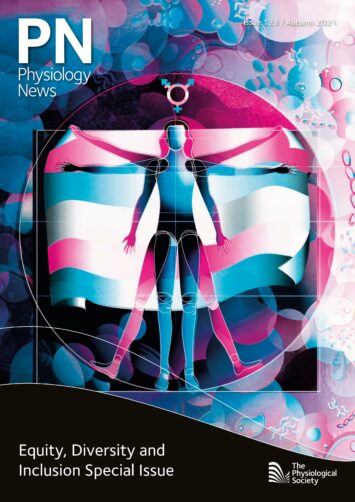
Physiology News Magazine
The story of when kidneys fail and the contribution of Air Vice-Marshal Sir Ralph Jackson
Letters to the Editor
The story of when kidneys fail and the contribution of Air Vice-Marshal Sir Ralph Jackson
Letters to the Editor
https://doi.org/10.36866/pn.123.9
Dr Andrew Davenport, University College London Department of Renal Medicine and Royal Free Hospital, London, UK
Professor Michael K Almond, Anglia Ruskin University, Chelmsford, UK
Following the recent publication in your Physiology News magazine of an article by one of us (Davenport, 2021) it has been brought to our attention by a reader that the contribution of Air Vice-Marshal Sir Ralph Jackson and the work of the Royal Air Force at the Princess Mary’s RAF Hospital, Halton was omitted. We would like to address that omission here.
The first recorded clinical haemodialysis in the UK was at the Hammersmith Hospital by Bywaters and Joekes in 1946 (Bywaters et al., 1948). Early results were not rewarding, and the method was abandoned for almost a decade.
Dialysis is next described in the UK as performed at Leeds General Infirmary by Frank Parsons and his team in September 1956 (Turney et al., 2011) and the third unit to provide dialysis was the Princess Mary’s RAF Hospital, Halton led by the then Group Captain Jackson working with Joekes (who had moved from the Hammersmith) in June 1957 using the new Kolff Twin Coil Artificial Kidney (Royal College of Physicians London, n.d.).
Jackson described his experiences in dialysing his first 20 patients at Halton in 1958 (Jackson, 1958). From the outset Jackson was insistent that the equipment used by the RAF should be unique in it being portable (able to be transported by air)
and with the design of the initial machine being improved upon by an RAF technical unit, better electronic monitoring and more efficient blood pumping was achieved (Posselt et al., 2018).
One “mission”, where the equipment was delivered to the patient, including a photograph of the machine ready for transport and the weight involved, is described by Honey (Honey et al., 1959). We are fortunate that in 1958 the Royal Infirmary of Edinburgh conducted visits to the three units carrying out dialysis at the time – Hammersmith, Leeds and Halton – to help decide which system in use would be the one Edinburgh would adopt (Robson et al., 1958).
In doing so they demonstrated in their report that Jackson and his team were not only being the first to use the novel twin coil dialyser, but that Halton was using the added refinements of ultra-filtration and veno-venous dialysis, having benefited from the blood pumps developed on site. Following the pioneering work at Halton, the Kolff twin coil dialyser became the standard for the new dialysis units being established in Dublin, Belfast, Edinburgh, Glasgow, the Royal London and Royal Free Hospitals.
We hope this goes someway to fill in any gaps as to the contribution Sir Ralph Jackson and the RAF Medical Services made to the evolution of haemodialysis technology in the UK.
References
Bywaters EGL et al. (1948). The artificial kidney: its clinical application in the treatment of traumatic anuria. Proceedings of the Royal Society of Medicine 41(7), 420–426.
Davenport A (2021). The story of when kidneys fail: The evolution of haemodialysis technology. Physiology News 121. https://doi.org/10.36866/pn.121.26
Honey GE et al. (1959). Artificial respiration and an artificial kidney for severe barbiturate poisoning. British Medical Journal 2(5160), 1134–1137. https://doi.org/10.1136/bmj.2.5160.1134
Jackson RC. (1958). Experiences with the Kolff Twin Coil Artificial Kidney at the Renal Unit, Princess Mary’s Royal Air Force Hospital, Halton. Proceedings of the Royal Society of Medicine 51(12), 1071–1072.
Posselt BN et al. (2018). 100 years of the Royal Air Force’s contribution to medicine: Providing care in the air and delivering care by air. Clinical Medicine 18(4), 297– 300. https://doi.org/10.7861/clinmedicine.18-4-297
Robson JS et al. (1958). Report on the United Kingdom artificial kidney units. https://edren.org/ren/wp-content/uploads/2018/11/HDinEdinI1958report.pdf
Royal College of Physicians London. (n.d.). Sir Ralph Coburn Jackson. https://history.rcplondon.ac.uk/inspiring-physicians/sir-ralph-coburn-jackson
Turney JH et al. (2011). Early dialysis in Britain: Leeds and beyond. American Journal of Kidney Diseases 57(3), 508–515. https://doi.org/10.1053/j.ajkd.2010.10.043
